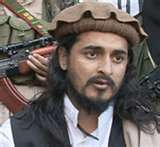
To start things off, I wanted to link to an excellent article/profile written by Chris Anzalone over at Foreign Policy (Chris also blogs at Views from the Occident, one of my daily reads). He profiles the recently deceased Bekkay Harrach, who was a key face for Al Qaeda in its European/German operations. Bekkay aka Abu Talha al Almani was reportedly killed in May 2010 leading a complex suicide attack on Bagram Airfield in eastern Afghanistan.
This is significant for many reasons, most of which Anzalone highlights expertly in his article, including:
• The rising levels of German citizens traveling to the AfPak region to participate in attacks; and the related implications of the ability for these individuals to acquire safe haven in Waziristan and NW Pakistan.
• The increasing ties between Al Qaeda Central, the Tehrik e Taliban Pakistan (TTP), and the Islamic Movement of Uzbekistan (IMU) - who all reportedly collaborated for the attack that Harrach died in.
• The pattern of using "local" spokespersons on many As Sahab media productions (such as Adam Gadahn in many of the English-language videos), indicating the increasing Western-focused media campaign by AQ. This clearly has direct recruiting/operational implications as well.
However, this report also prompted me to ask another question: why would AQ Central approve/allow such an important strategic figure to participate in what was essentially a tactical level operation? By many reports, Bekkay was one of the key inspirational and operational leaders of a group of German citizens who had traveled to the AfPak region and were serving as a forward hub for many European AQ members who wanted to participate in the jihad in Afghanistan. The only logical reason for Bekkay Harrach to lead the attack would be to gain additional followers and recruits after martyring himself. Essentially, he made the calculus that his death was more valuable to the organization than the work he was doing while still alive. Despite this possibility, I still have a hard time seeing the leadership of AQ Central being willing to lose such an important media/propaganda figure in such an attack. Anyone have other competing theories that might explain this anomaly?




.jpg)






Pat,
ReplyDeleteCongrats on Georgetown, and good luck.
I think that if we assume a purely rationalistic take on BH that we have a few possible reasons why one might risk a supposedly important operative. The first is the one that you provide, which I will call the Obi Wan Kenobi theory. However, there are at least two other possibilities.
One is that either BH was not that key to the European members of Al Qaeda, or that the European members as a whole are not that valuable. In the later case, there are several possibilities, but the most likely seems to be that as Al Qaeda has decentralized to become more of a network and less of an organization each group has become increasingly parochial. As such in an area where Al Qaeda interests are likely dominated by the local ethnic Pashtun's the relatively few Europeans would become secondary actors, or perhaps even liabilities for solidarity. In the end, war, just like politics, was all local. We can call this the parochialization theory.
The second possibility is that Al Qaeda is really hard up for people. Al Qaeda was never really that large to begin with and a continuous stream of Hellfire missles can wear a group down. An organization of a few hundred can only afford to lose one person a day for so long. We can call this the attrition theory.
None of the three theories is clearly dominant, nor are they mutually exclusive. However, if we start seeing other mid-upper level commanders getting killed in tactical operations we will know that it is probably either the attrition or the parochialization theory. If those commanders are both Pashtun and non-Pashtun then my money is on attrition. If it is primarily 'outlanders', then it looks like parochialization is the winner. In the end, I suppose that the Obi Wan Kenobi motive could be legit, but it sounds to me a lot like something someone tells themselves to feel better about throwing away their life for what is probably nothing. I would not rule out a somewhat irrational mid-level leader who liked to take unnecessary risks, though, so it remains possible.
David Benson
Or possibly he was trying to get some wasta and look like a jihad hero to the Euro front?
ReplyDeleteI'm with Josh on this one. Many a commander has risked to get some street cred in many a battle. Seems as likely as any other theory with a dose of Occam's Razor (or Hanlon's Razor, depending...). The pre-battle conversation probably went like this:
ReplyDeleteTaliban Commander: We will strike the devil in his den with a an army of martyrs tomorrow!
Harrach: Brother, let me lead some of your martyrs for glory.
Taliban Commander: Are you sure brother? this is a dangerous mission!
Harrach: I give my life for the jihad.
Army PFC on the HESCO: Roger, I see him. pop pop
Is there any info on IMU involvement in south Kyrgyzstan ethnic conflict(June 2010)?
ReplyDelete